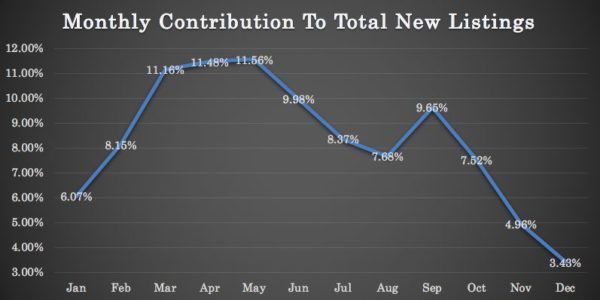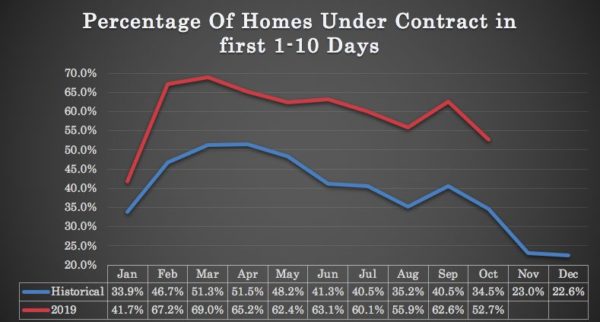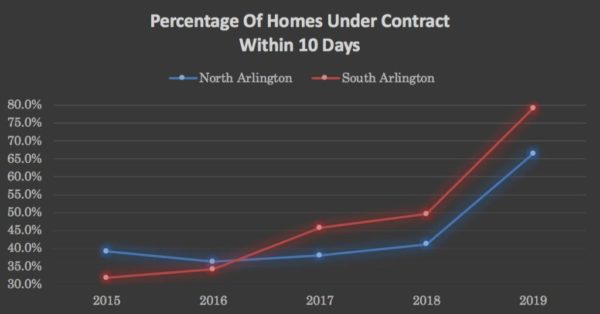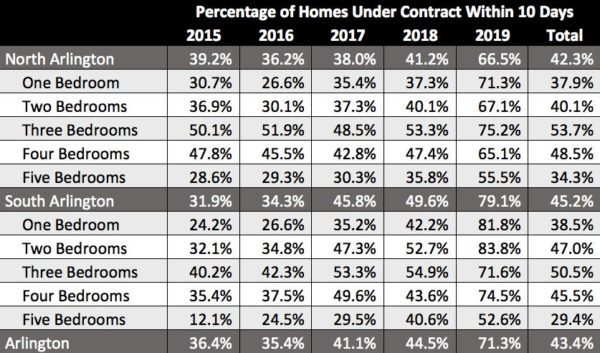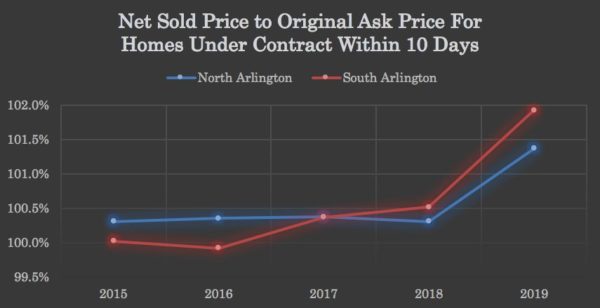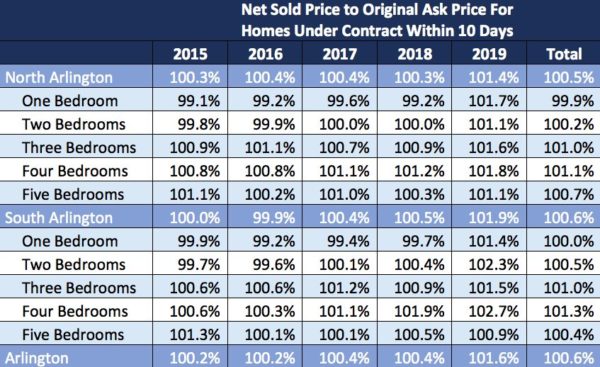This regularly-scheduled sponsored Q&A column is written by Eli Tucker, Arlington-based Realtor and Arlington resident. Please submit your questions to him via email for response in future columns. Enjoy!
Question: Does the Arlington market change in the winter?
Answer: November marks the start of the traditional “winter market” in Arlington that is defined by fewer homes being put up for sale and homes sitting on the market just a bit longer than they did earlier in the year. The decrease in new inventory will be obvious to anybody who has been searching for a home in 2019, but you’ll barely notice the increase in how long homes are taking to sell because the market is moving so quickly that even a slowdown will mimic spring markets in previous years.
Sharp Decrease In New Inventory
Historically, the fewest homes hit the market in Arlington from November-January, with the pace of new listings in December coming in at nearly 1/3 the rate of new listings from March-May. With inventory levels in 2019 already at historical lows, this winter will feel especially short on housing supply.
Buyer Demand Cools Off
Historically, the percentage of homes that go under contract within the first ten days decreases from November-January, with November and December (holiday season) having the most noticeable reduction in quick sales. However, with the pace of the Arlington market at all-time highs in 2019, you can expect the drop in demand in November and December to feel like peak spring demand in previous years.
Is The Winter The Right Time For You?
The winter can be a great time to buy if you’re more focused on value because demand decreases so you may pick up some negotiation leverage. However, if you’re searching for something unique and struggling to find properties that fit your criteria, the odds of the perfect place hitting the market in the winter decreases.
Given how low inventory is heading into this winter, I’m not sure buyers will find as many deals as they have in previous years. Demand is still strong from buyers who haven’t found a home yet in 2019 and low supply makes it a strong market for sellers, even during the holidays.
If you’re considering buying or selling in Arlington or the surrounding D.C. Metro communities and would like to learn more about the impact seasonality will have on your process, feel free to reach out to me at [email protected].
If you’d like a question answered in my weekly column or to set-up an in-person meeting to discuss local real estate, please send an email to [email protected]. To read any of my older posts, visit the blog section of my website at www.EliResidential.com. Call me directly at (703) 539-2529.
Eli Tucker is a licensed Realtor in Virginia, Washington D.C., and Maryland with Real Living At Home, 2420 Wilson Blvd #101 Arlington, VA 22201, (202) 518-8781.



